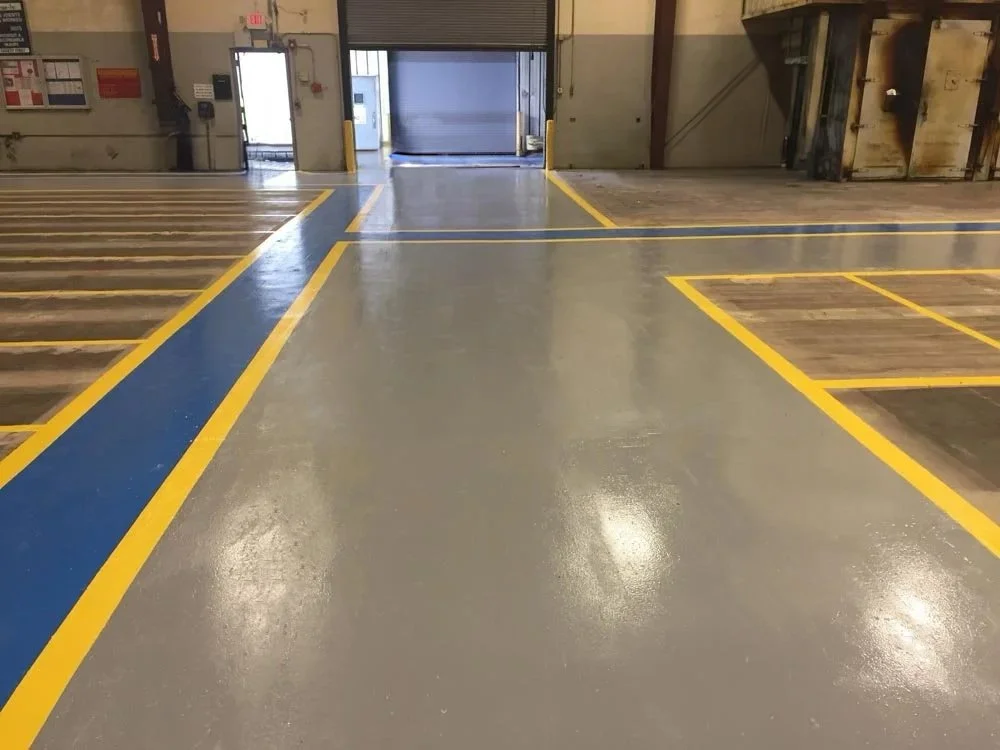Case Study: ANAD Bunkers Upgrades
Executive Summary
We recently completed the ANAD Bunkers Upgrades project for Bates Engineering and Construction at the Anniston Army Depot (ANAD). The job involved pressure washing and coating interior concrete, cleaning head walls, and restoring heavily corroded bunker doors.
Working inside partially underground bunkers presented real challenges: high humidity, rusty doors, strict environmental restrictions, and no water or power on site. Even with those obstacles, we finished the project ahead of schedule, with zero safety incidents, and only a minimal punch list.
Project Information
Client: Bates Engineering and Construction
Location: Anniston Army Depot (ANAD)
Scope: Pressure washing and painting interior concrete, pressure washing head wall, prepping and painting bunker doors
Results: Ahead of schedule, 0 safety incidents, minimal punch list
Background
The U.S. Army depends on ANAD’s partially underground bunkers for secure, long-term storage. Years of exposure had taken a toll, with humidity causing coating deterioration and steel doors suffering from corrosion.
We’ve worked on many federal and military projects, but these bunkers had some unique challenges. No water on site, no detergents allowed, and no power available meant we had to plan carefully and adapt in the field.
Challenges & How We Solved Them
High Humidity in Partially Underground Bunkers
The underground humidity could have slowed curing and hurt adhesion. To stay ahead, we pressure washed well before application, used a moisture-curing primer, and finished with an exterior-grade paint for durability. We also ran fans, when possible, to improve airflow, even though power was limited.
Rust and Corrosion on Bunker Doors
The doors had advanced corrosion. Our crew performed power tool cleaning to remove rust, then applied a rust-preventative primer followed by a high-performance alkyd enamel. This system gave the doors a durable, long-term finish.
Environmental Restrictions – No Detergents
Since detergents were off-limits, we relied on high-pressure washing with oscillating tips to clean surfaces effectively while meeting environmental requirements.
No On-Site Water
We coordinated with ANAD to access a fire plug, brought in water trailers, and supplied our own backflow preventer to stay compliant. This setup kept the job moving without delay.
Application Methods and Workflow
To maximize efficiency, we covered the floors and sprayed the interior using tip extenders, which let us spray walls and ceilings from the floor. For prep and washing in higher areas, we used lifts, keeping work safe and efficient.
Safety and Quality
This job required only standard PPE for spraying, pressure washing, and lift use. What really ensured quality was our prep work, coating selection, and experienced crew. The payoff was a minimal punch list and smooth client acceptance.
Results
Finished ahead of schedule
Zero safety incidents
Minimal punch list
Restored durability of interiors and steel doors
Strong client satisfaction and compliance with standards
Conclusion
For us, the ANAD Bunkers Upgrades project proved that preparation, planning, and teamwork pay off.
Even with no power, no water, and no detergents, our crew found ways to get the job done right.

